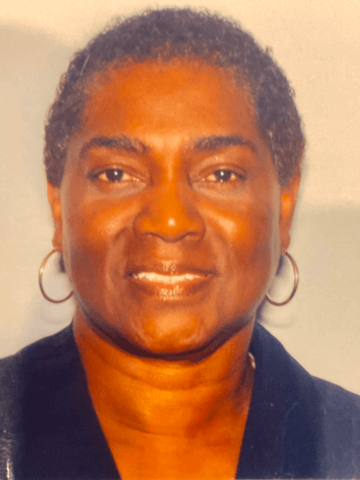Reflections from Faculty
I arrived at Howard University in Fall of 1992 and assumed the position as Chair of the Sociology and Anthropology Department. Prior to my journey at Howard, I served as the Executive Director of the Center for Women in Government (CWIG) at the State University of New York-Albany (SUNYA). At the time, the institution was highly regarded for its ground-breaking work towards the advancement of gender equity in the workforce. While at SUNYA, I traveled to DC to involve Howard University women in an initiative funded by the Ford Foundation. During my visit, Dr. Joyce A. Ladner, former Provost for Academic Affairs, suggested that I consider coming to Howard to launch programs to benefit Howard women.
Dr. Ladner said, "…instead of you bringing SUNY money here, you should be here helping to move things."
As we sometimes say, "enough said.”
At the time, education data showed women outpacing males (and Black women far outpacing Black males), but we needed to take notice and ask where and at what level in the academy this occurs. That desire for knowledge led me to heed Dr. Ladner's call to action.
Planning began with excitement from a significant number of supportive colleagues. Both the student body, faculty and staff collaborated to craft a program that would resonate across all disciplines. Since we did not have sufficient funds to design a center, establishing a women's institute presented a feasible opportunity for future growth. Although this fresh idea generated many supporters, it also came with resistance.
Many thought the name African American Women's Institute (AAWI) was exclusionary, but it needed to stand - it was a part of our identity. Women centers all around the country popped up during this time, supported by the Ford Foundation. However, very few collegiate women's centers staffed women of color. Beverly Guy-Sheftall at Spelman College, Dr. Bonnie Dill Thornton at the University of Maryland and I, were a part of a small margin of women of color within the women's center conglomerate.
The next step after naming and defining vision, mission, goals and objectives was to create a framework that consistently engaged students of all backgrounds. As chair of the Sociology and Anthropology Department, I had a platform that provided excellent foundational resources to promote that framework. My team introduced courses that focused on women's issues and roles in society. In addition to introducing new courses, we also expanded our visibility on campus by launching a website and hosting small gatherings on campus. Dr. Ladner's initial $6,000 contribution supported the institute's preliminary work.
In 1997, Dr. Guy-Sheftall introduced me to the Massachusetts Institute of Technology's conference entitled, "Black Women in the Academy: Defending Our Name" held in 1994. The allies I met at this conference were instrumental in helping me launch Black Women in the Academy II at Howard. The conference at Howard University would mark five years after the first meeting was held at the Massachusetts Institute for Technology (MIT), and it would launch the African American Women Institute (AAWI) at Howard.
A small gathering of MIT women met with me led by Dr. Evelynn Hammonds. This led to a discussion that it was a good a good time to launch a Black Women in the Academy II, examining women’s space in the academy nationally and internationally, one that women at HU under the umbrella of the newly formed African American Institute could launch. Black Women in The Academy II was carefully crafted over more than a year’s time. We worked with the MIT women to tap women across the country; but we wanted to engage the HU campus in a broader reach than the MIT women had done. Not only did we want US women, but I also wanted international participation and I wanted a deeper reach for women on our campus; I wanted the arts and professional disciplines, and we did.
I reached out to NSF first for funding. I had worked with colleagues at the foundation for years and they did not disappoint. My next approach was to the Ford Foundation. Again, the response was with enthusiasm and support. The success of the conference was incredible. Women were calling and lobbying to participate. However, at some point we had to finalize the program. So, on June 24,1999 AAWI launched its first major event on an international scale. Three days of plenary sessions, workshops, special sessions, an art exhibition and catalogue, honorary receptions, a book exhibition, and vendors. The Ford Foundation funded all of the international travel and accommodations. NSF funded space and reception, it also provided additional money directly to women from other universities who wanted to bring students.
This ambitious and successful event helped us post conference, to institutionalize some of the work. Following the success of the Black Women in the Academy II, Dr. Carla Brailey suggested a certificate program. So, we set out to create the Graduate Women’s Certificate Program open to all HU graduate students. Men could learn more about the women they studied and worked beside. The Program has been thriving for more than a decade. Dr. Rebecca Reverie and Dr. Anita Nahal drew upon other departments to offer a cluster of courses, all of which contained a feminist theory anchor. Their efforts, along with the generous aid of independent donors, the Ford Foundation, and the National Science Foundation, led to the certificate program's approval.
The Institute and Certificate Program at Howard University are precursors to the Center for Women, Gender and Global Leadership. Now, more than ever, this Center is needed. Unfortunately, the numerous inequities that gave rise to women centers still prevail. Women of color and their communities remain disproportionately impacted economically, politically, and educationally. The Center at Howard will no doubt lead to greater knowledge, advocacy, and positive outcomes for all.

